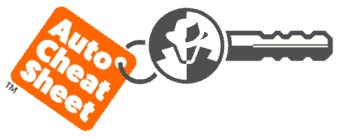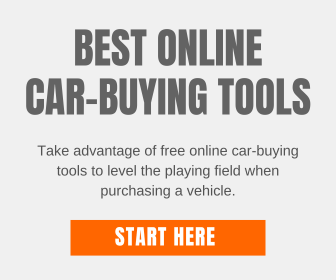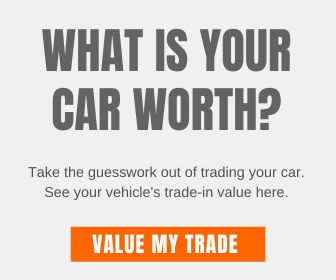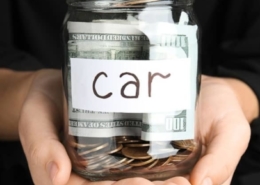Car Shopping Online Saves You Money
Bored, irritated, frustrated. No, not a hormonal teenager but a description of someone trying to buy a car in a dealership. All you want to do is get some information about cars, and It’s like the salespeople attempt to make it as difficult as possible. A visit to the dentist promises to be more fun—just one of the many reasons people do their automobile shopping online before stepping foot in a dealership.
Most people buy their music and books over the internet. You might even have bought your last vacation that way. So why do car buyers not do their initial car shopping online and persist in visiting a dealership in person?
Well, there is one good reason we’ll come to it in a moment, but overall, online car shopping is a much easier way to find your next new or used car and pay the best price.
Table of Contents
- Why the dealership experience usually sucks
- The wrong place to learn how to buy a car
- Not the place to get a great price
- What should you visit a dealership for
- What you need to know before buying a car
- Where to get the information you need
- Benefits of car shopping online
- How to obtain competitive car price quotes
- The online car-buying process
- Automobile shopping online is key
Why the Dealership Experience Usually Sucks
No wonder more people turn to the internet for automobile shopping online. Showing up at a car dealership is rarely satisfying. You walk in curious to see what’s new and leave three hours later, poorer and with a severe case of buyer’s remorse.
Please don’t hold it against the salesman. He’s only trying to make a living. It would be best if you blamed yourself for being uneducated and unprepared.
Buying a car shouldn’t be hard work, and it isn’t if you know how to shop for a vehicle online correctly. The World Wide Web can provide all the information you need to find the right car at the right price.
There are two problems with marching down to the dealership once you’ve decided it’s time for a new ride. First, it’s the wrong place to learn about the vehicles available, and second, it’s the wrong place to get a reasonable price.
By doing your car shopping online beforehand, you can avoid many car dealer scams by not dealing with unethical dealerships.
Dealerships are a Bad Place for Learning
If you visit a dealership hoping to learn about the cars a manufacturer builds, you’re in for disappointment. These guys aren’t interested in educating you about models, trim levels, engine choices, and optional features. That takes time they’d rather spend with someone ready to sign on the dotted line.
A car salesman understands he isn’t making any money unless he’s selling a car. No matter what they say, they don’t want to waste several hours with someone who’s “just-looking” when they have an opportunity to grab someone ready to buy a car.
Once they realize you’re just gathering information and not buying today. Salespeople will still try and sell you a car, knowing they don’t have anything to lose. However, you will probably get pawned off to a “newer” salesperson, waved off with a card and brochure, or even flat ignored until you finally decide to leave.
You could complain to the sales manager. Of course, they will most likely ask you one question. “Are you buying a car today?” If you say “no,” you probably won’t see much of them either.
It’s not much different if you’re shopping for a used car. Car salespeople are not personal assistants. You shouldn’t expect to get an unbiased recommendation from them.
If you don’t know what type of car you want, they’ll steer you to a vehicle they want you to buy. And guess what? That’s the one that maximizes their commission, puts the most money in their pocket, and will not be the one that best suits your needs.
How often have you heard a friend or family member say, “When I went to the dealership, I wasn’t expecting to buy a car today.” That is the worst statement anyone can make, and when visiting a car dealership unprepared, it’s the biggest mistake ever. There’s a car salesman still on vacation with the commission they made on that deal.
It is never a good idea to “pop in” a dealership to look at cars. The dealership’s entire car sales model is geared towards people just dropping by to take a look.
A Bad Place to Get a Good Price
New cars will usually have a sticker on the window. The trade term for it is the Monroney sticker. The Monroney sticker tells you what the car is and lists the equipment and the price. Is that what you’d pay to drive it away? Almost certainly not. The Manufacturer’s Suggested Retail Price (MSRP) is “the suggested retail price.”
Often, a dealer will add a sticker (addendum sticker) to the vehicle. This sticker will have many high-profit dealership-added options that might or might not have been added to the car.
On the minus side, dealer incentives or manufacturer rebates may be available that bring the price down hundreds or even thousands of dollars. Other factors affecting the sticker price are taxes and other dealer, city, or government fees.
Car dealerships don’t want transparent pricing like in the grocery store. They want to engage you in conversation. They’ll try to find out what you can afford and what you’re willing to spend, and then they’ll find a car that maximizes what they can extract from you.
Another reason they hate transparency: is they don’t want you shopping around. Dealers know this will almost always decrease their chances of maximizing their profits. They want to keep you in their office until you agree to sign.
And don’t forget, if you agree to buy a new car in the dealership, it’s not over yet. You’re about to meet their highly paid, highly skilled Finance and Insurance (F&I) guy.
His job is to sell backend products and, most likely, things you don’t need. He starts with the many different finance options and over-priced extended warranty products but quickly moves on to windshield protection and rustproofing.
Mind you. You just went 12 rounds with the salesman. Now is not the time to be numb to the issue at hand. The F&I department is one of the highest profit centers in a dealership. It is easy to get confused during this time of the car buying process. Unless you’re strong-minded, it’s easy to end up paying for extras you didn’t want.
Used car buying is hardly any different, except it’s less transparent. You don’t even have a Monroney sticker to show you the MSRP. And comparison shopping is hard because you’re trying to compare age, mileage, condition, models, and trims.
Review my Automotive Finance Guide for everything you ever wanted to know about auto finance loans and how to avoid dealer finance scams.
Why Visit a Car Dealership?
Two words, test drive. You can do all your research online and get free new and used price quotes from websites such as Ryde Shopper, Edmunds, or Cars Direct. But you can’t tell how a car feels without getting behind the wheel. But again, don’t show up not knowing what you want to drive.
Instead, call or email the dealer first. Let them know you’d like to drive a specific make and model of a car. They won’t mind. It makes their life easier because they get to spend less time with you, and they can ensure the vehicle you’re interested in is available.
After speaking with you for a few minutes, the salesman will understand you’ve been doing your homework and have a good understanding of car buying.
They will also know you may not be a high commission sale if they treat you professionally and respectfully. You will be an easy, quick sale if you choose to buy the car they have for sale.
What You Need to Know Before Buying a Car
Let’s look at what you need to think through so you can buy a car and be happy.
Start by considering your needs, priorities, and of course, budget. Reality will set in the right about now. Put on hold those dreams of a two-seat convertible and recognize that you need an SUV with plenty of room for dogs, kids, and sports gear.
In terms of priorities, are you focused on safety and fuel economy, or are towing capacity and AWD more critical? If safety scores highly for you, you may want to look for cars with advanced driver assistance systems like blind-spot warning, active cruise, and a rearview camera.
Then give some thought to the features you might enjoy. For example, heated seats are great if you park outdoors overnight in the Northeast and less important if you never leave the Southwest. Or what about a sunroof? And then there’s color, paint, and interior, along with wheel options. (Bigger isn’t necessarily better.)
Where to Get This Information?
Buying a car is no different from buying anything else. It’s up to you to decide what you want and where to buy it. Start by determining what you want, what will suit you best, and what you can comfortably afford. Then look to see where you can get the best deal. The internet can and will provide you with a lot of tools.
Research sources:
- Manufacturer websites – Hardly unbiased, of course, but they let you study trim and equipment levels, look at paint colors and wheel options, and will give you a price.
- Automotive magazines – Aimed at enthusiasts, these are sometimes a little dismissive of cars they consider “boring,” but they will give you a sense of how a vehicle feels to drive.
- Independent automotive review sites – Organizations like Consumer Reports are pretty objective and pay attention to reliability and practicality along with vehicle features and benefits.
- Government and Insurance Institute websites – These services provide independent gas mileage and safety ratings for just about any vehicle on America’s roadways.
- Automotive Car Shopping Sites – Independently operated review sites like RydeShopper, Edmunds, MotorTrend, and CarsDirect contain unbiased reviews. These services also allow you to request free price quotes to find dealers in your local area offering the best price.
If you’re not sure precisely what you want, this is where automobile shopping online can help you. First off, visit some manufacturer websites. Be very careful when requesting more information through nationwide websites like Chevrolet, Ford, Toyota, etc.
Often, these sites are computer operated and will shotgun your information out to several dealerships within a couple of hundred miles. Salespeople will hammer your email and phone trying to sell you a car. Some of these salesmen can be very brutal.
You can browse online automotive magazine articles for information. Remember that an enthusiast magazine may not align with the same mindset as yours. If we followed their advice, we’d be driving stick-shift diesel wagons and Miatas. Articles in these magazines are often published to favor the manufacturer. The one with the most money gets to be #1 in the report.
Don’t overlook two government websites as excellent unbiased information sources. Fueleconomy.gov, safercar.gov, and the IIHS have complex data derived from testing collected nationwide. Run by the National Highway Traffic Safety Administration (NHTSA), safercar.gov also has information on recalls, which is very helpful if you’re shopping for a used car.
If you already know what make and model appeals to you and are buying used, getting details about specifications is quite hard, mainly what a used car sells for in your area. Ryde Shopper, Edmunds, and Motor Trend are the best places to get free price quotes online.
Details about models and trims are challenging to come by, they want to build an image of what kind of person buys this particular vehicle, but most offer a configuration tool. You can click through to explore all the different options available. When done, it will tell you the price and offer to put several dealers in touch with you. That’s when you stop clicking! It’s time to get some free online competitive quotes.
Remember, the manufacturer wants you to buy one of their vehicles at the highest price possible. The more money the dealer makes, the more money the manufacturer makes. Just like dealerships, automobile manufacturers are “For-Profit Businesses!”
Benefits of Car Shopping Online
There are many benefits to online car shopping. The main three are:
- Gives you more choices – Track down the exact make, model, color, and trim of the vehicle you’re looking for and even select the options or packages you want from the comfort of your computer, smartphone, or mobile device.
- Saves valuable time – Visiting a few dealerships can easily consume a day. Even then, you may not have seen the car you want, and you certainly won’t have had much time for price comparisons.
- Saves you more money – Online car shopping often yields a better deal. That’s because dealerships see internet sales as a high volume, low margin business. They know you’ve done your research, so they don’t have to invest a lot of sales time and effort, and they won’t try to steer you to something more profitable.
How to Get Competitive Price Quotes Online
Before talking about prices, let’s review. We’ve established that you will work out what car you want before visiting the dealership. If you’re down to just a few possibilities, you’ll schedule test drives to help you make a final decision.
Each dealership will want to know if you’re going to buy from them and roughly when you’re looking to make a final decision. It’s legitimate to say you want to drive some other cars first before deciding.
Just be polite and let them know upfront. A professional salesperson will appreciate it, and you won’t cause any offense.
Start Your Low Price Bidding War Here
Ryde Shopper | Edmunds | Motor Trend | CarsDirect
And now you’re ready to find out the best price you can get for your chosen car. You can take two approaches to this: contact each dealer directly or go through an online service and let them do the work for you.
Many times it works out better than contacting them directly because a dealer will know for sure that your quote not only came to them. But any other same brand dealer in the area. You will automatically make them relook at the quote they send you knowing they compete with other dealers in the area.
Directly contacting dealerships means working with their internet sales department. You email them the exact details of what you want and ask for their best price. They’ll usually respond quickly, and often the prices quoted are pretty competitive (and far better than what you’d get in the showroom.)
Alternatively, a free online quote service will do this for you, saving time and money. Ryde Shopper and Motor Trend are great examples. Their websites are effortless to navigate and have tools like a payment calculator plus a form where you enter details about the car you want. You also put in your zip code, and the site offers you a list of local car dealers. You can pick up to five dealers with the car you’re interested in, and they will respond to you with their quotes.
I recommend receiving at least seven quotes. This gives you a good idea of how much a specific vehicle sells in your local area.
The Online Car-Buying Process
Most would offer to share your contact details with a dealership if you started at a manufacturer’s website. Many independent automotive websites will do the same. (Most sites have contracts or collect a fee from the dealership to provide this information.)
When requesting a free new or used price quote, someone from the dealership’s internet sales department will contact you, usually via email, with the requested information.
Alternatively, you can contact nearby dealerships directly through their dealership websites. When emailing the dealership, tell them precisely what you’re looking for and ask for a price.
Visit my article on “How to Negotiate with a Car Dealership by Email” to see examples and even use my car dealership email templates. Once you get several quotes, the best online car dealerships will compete to see who will offer you the lowest price.
You may even find a dealer in your local area willing to sell a new car under factory invoice price to get the car sold and off their lot.
Don’t forget that you can also research dealerships before you visit them online. Read reviews to learn what other car buyers thought of them, but please remember that not everyone is unbiased!
Don’t forget the test drive!
I would never tell you to buy a car without first “trying it on for size.” I mean, you wouldn’t buy a pair of pants before you tried them on, would you?
You will still need to visit the dealership before finalizing the deal. You will want to sit in the car and see how it looks, feels, smells, and, most importantly, how it drives if you’re buying a used car.
Check out my article “How to Test Drive a Used Car” for tips and tricks to correctly test drive a preowned vehicle and ensure you don’t get stuck with somebody else’s problems. The technique works for new cars as well.
As with doing your research, don’t just walk into a showroom and ask for a test drive. This is what the dealer wants you to do. They’re unlikely to have the exact car you want available, and they’ll probably keep you waiting while they try to sell you a vehicle you don’t want. This is also the time they’ll use to give you their sales pitch!
Instead, use the massive power of the modern internet after you’ve done your research online. Email them asking to schedule a test drive of a specific vehicle. Dealerships prefer this because it lets them use their time more efficiently.
After your test drive, don’t start negotiating. Say you need to think about it and leave. Then, if you’re sure it’s the car for you, email to say you’re ready to buy. They may ask you to call in, but many dealerships will bring the vehicle and paperwork to your home or office.
Automobile Shopping Online is Key
Car showrooms are not the place for learning about the car you’re interested in purchasing. The salespeople don’t want their time taken up with people just kicking tires, and often they don’t have all the facts and figures you might be seeking. They only care about finding out how much money they can persuade you to part with so they can maximize their commission.
The much more intelligent way of shopping for a car is with your browser, the one on your laptop, PC, or mobile device. Research the vast quantities of facts and opinions online, figure out what you want, and then invite dealers to quote. It’s easier, it can save you time and money, and it’s all done from the comfort of your kitchen, lounge, or study.
Be a Savvy Car Shopper
The number one tip for saving the most money when shopping for a new or used car is to always “DO YOUR CAR-BUYING HOMEWORK FIRST!”
For more hints and tips on navigating the new and used car buying process, spend a little time upfront before beginning your car shopping journey by browsing through my 100% free online car-buying guide.
I recommend using an online referral service such as Ryde Shopper, Edmunds, and Motor Trend before visiting a car dealership.
Their free online price quotes will automatically include any discounts or cash-back incentives currently available in the marketplace.














